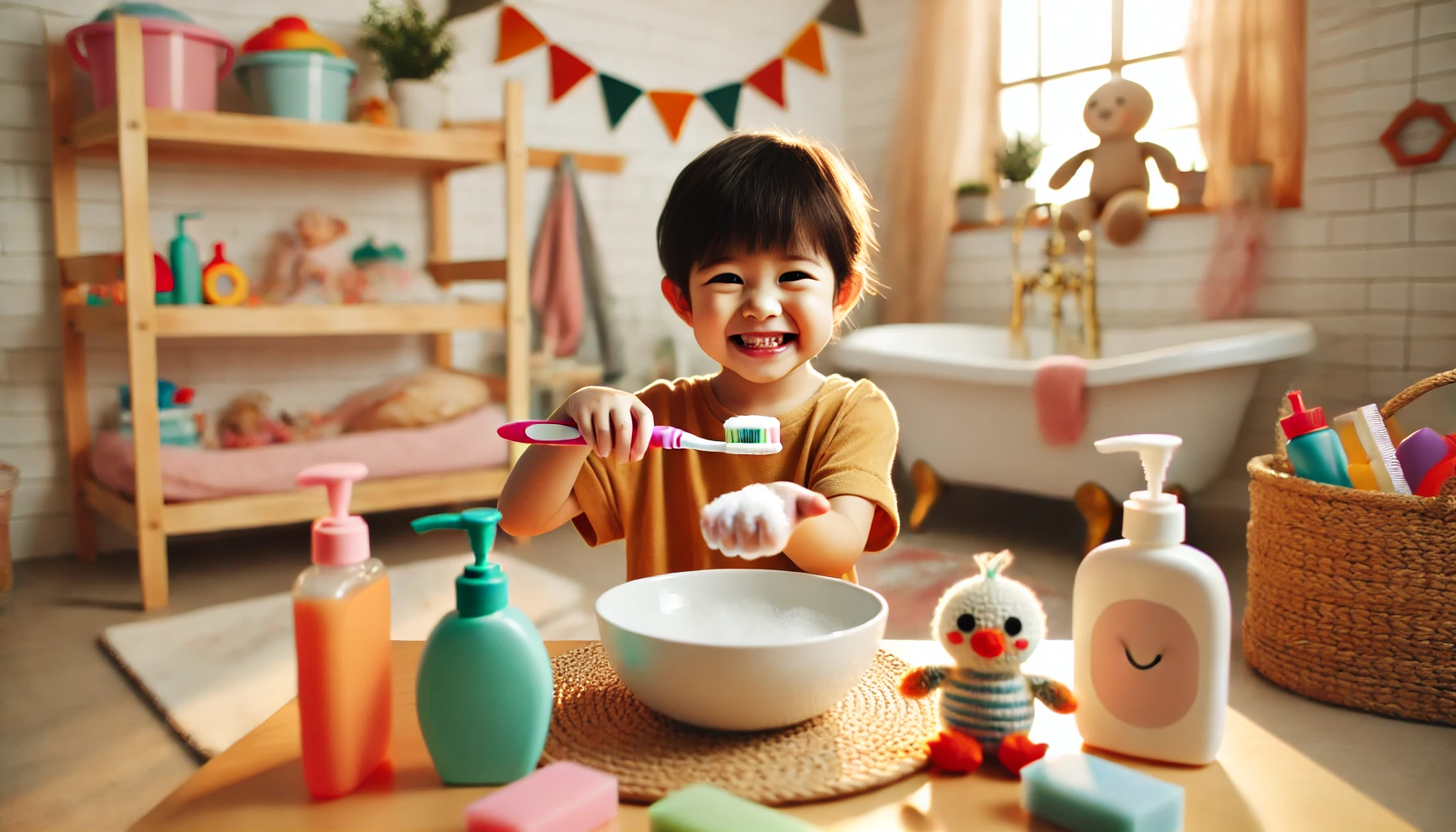How to Teach Young Children About Self-Care and Personal Hygiene
Teaching children about self-care and personal hygiene from an early age helps them develop healthy habits that last a lifetime. Good hygiene practices not only prevent illness but also build self-confidence and independence. Parents can make learning about hygiene fun and engaging through routines, games, and positive reinforcement. In this article, we’ll explore practical ways to help young children take care of themselves.
Why Teaching Self-Care and Hygiene is Important
- Prevents illness and promotes good health – Teaches kids how to stay clean and germ-free.
- Builds independence – Encourages children to take responsibility for their own care.
- Boosts self-confidence – Helps children feel good about themselves.
- Encourages good habits for life – Establishes a foundation for lifelong hygiene practices.
- Promotes social well-being – Helps children understand the importance of cleanliness in social interactions.
1. Establish a Daily Hygiene Routine
A structured routine makes hygiene a natural and easy part of everyday life.
Activity Idea:
- Create a morning and bedtime checklist with hygiene tasks (e.g., brushing teeth, washing hands, combing hair).
- Use visual charts with pictures to help younger children remember steps.
- Set a daily routine where hygiene activities happen at the same time every day.
What Kids Learn:
- That hygiene is a daily responsibility
- How to remember and follow self-care steps
- The benefits of having a structured routine
2. Make Handwashing Fun and Engaging
Handwashing is one of the most important hygiene habits to prevent germs.
Activity Idea:
- Sing a 20-second song (like “Happy Birthday” twice) while washing hands.
- Use colorful soap or foaming hand wash to make it fun.
- Show how germs spread with glitter on hands, then wash it off with soap.
What Kids Learn:
- The importance of washing hands after playing, using the restroom, and before eating
- How germs spread and how soap removes them
- That hygiene can be fun with the right approach
3. Teach Proper Teeth-Brushing Techniques
Brushing teeth helps prevent cavities and keeps smiles healthy.
Activity Idea:
- Use a fun toothbrush with a favorite character and flavored toothpaste.
- Set a timer for two minutes to ensure proper brushing time.
- Use a toothbrushing app or song to make the routine enjoyable.
What Kids Learn:
- How to brush thoroughly for healthy teeth and gums
- The importance of brushing twice a day
- That good oral hygiene prevents dentist visits for cavities
4. Encourage Bathing and Hair Care as a Positive Experience
Bathing should be seen as a fun and relaxing part of the day.
Activity Idea:
- Let children choose fun bath toys or colorful bubble bath.
- Teach proper hair washing by using gentle, tear-free shampoo.
- Turn bath time into a self-care spa with a warm towel and soft music.
What Kids Learn:
- The importance of keeping their body clean
- How to wash and rinse properly
- That personal care can be enjoyable and relaxing
5. Explain the Importance of Clean Clothes
Wearing clean clothes is part of maintaining personal hygiene and feeling fresh.
Activity Idea:
- Let children help choose and lay out their clothes for the next day.
- Teach them how to put dirty clothes in the laundry basket.
- Talk about how clean clothes help us feel comfortable and confident.
What Kids Learn:
- How clothing choices affect personal hygiene
- The importance of changing clothes daily
- How to be responsible for their own laundry habits
6. Teach Children to Cover Their Mouth When Coughing or Sneezing
Good hygiene includes preventing the spread of germs to others.
Activity Idea:
- Teach the “vampire cough” (coughing into the elbow instead of hands).
- Use a spray bottle to demonstrate how sneezing spreads germs and how covering helps.
- Practice saying “Excuse me” after coughing or sneezing in public.
What Kids Learn:
- How to keep others safe from germs
- That good manners and hygiene go together
- The importance of being mindful of public health
7. Use Books and Videos to Reinforce Hygiene Lessons
Stories help children connect with characters who practice good hygiene.
Activity Idea:
- Read books like Germs Are Not for Sharing by Elizabeth Verdick or Brush Your Teeth, Please by Leslie McGuire.
- Watch kid-friendly videos about personal hygiene routines.
- Ask, “Why do you think the character takes care of their body?”
What Kids Learn:
- How hygiene helps people stay healthy and feel good
- That good hygiene is a part of everyday life
- How to make self-care fun and interesting
8. Praise and Reinforce Good Hygiene Habits
Positive reinforcement encourages children to keep up with hygiene practices.
Activity Idea:
- Say, “Great job brushing your teeth all by yourself today!”
- Use a sticker chart where kids earn rewards for completing hygiene tasks.
- Ask, “How do you feel after taking care of yourself?” to build self-awareness.
What Kids Learn:
- That good hygiene is appreciated and important
- How self-care leads to feeling fresh and confident
- The motivation to continue practicing good habits
Final Thoughts
Teaching young children about self-care and personal hygiene helps them develop confidence, independence, and lifelong healthy habits. By making hygiene routines engaging, using positive reinforcement, and leading by example, parents can guide children in taking responsibility for their own well-being.
